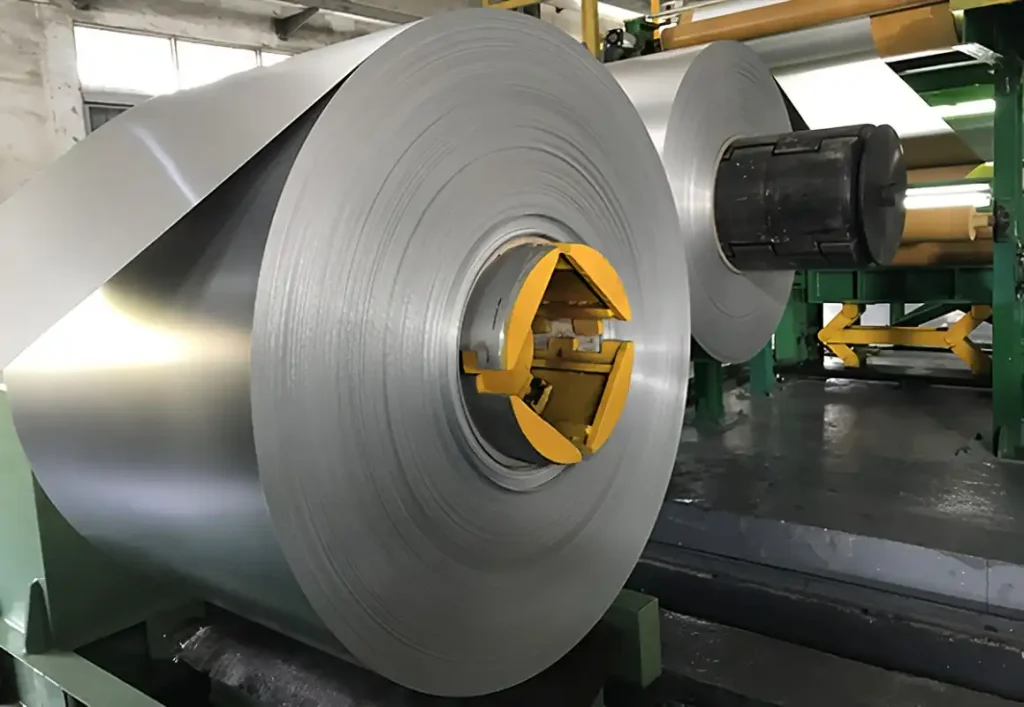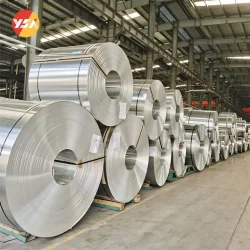Aluminum Oxide Coil
Overview
Anodic oxidation of aluminum is an electrolytic oxidation chemical process that results in the formation of an oxide film on its surface. This layer of oxide film produced by this technology treatment, compared with the traditional process, the film layer has diamond-like hardness, never fall off; crystal clear high-grade decorative effect. Anodic oxidation technology overcomes the defects of traditional aluminum alloy surface treatment technology in terms of hardness and abrasion resistance, expands the application range of aluminum alloy, greatly extends the service life of aluminum alloy, and is currently the most widely used and successful technology in the world.
Oxide film thin layer with a large number of microporous, can adsorb a variety of lubricants, suitable for the manufacture of engine cylinders or other wear-resistant parts; film microporous adsorption capacity can be colored into a variety of beautiful and colorful colors. Non-ferrous metals or their alloys can be oxidized. Aluminum oxide coil is widely used in machinery parts, aircraft and automobile parts, precision instruments and radio equipment, building decoration, machine shells, lamps and lanterns, electronic consumer goods, handicrafts, household appliances, interior decoration, signage, furniture, automobile decoration and other industries. The advantages of aluminum oxide coils are good workability, strong decorative, moderate hardness, can be easily bent into shape, continuous high-speed stamping, easy to directly processed into products.

Characteristics
Lightweight and High Strength: Aluminum oxide coil is lightweight and has high strength compared to many other metals. Despite its lightness, it still possesses excellent strength and durability, making it an ideal structural material.
Corrosion Resistance: Aluminum oxide coil exhibits excellent corrosion resistance. The surface of aluminum forms an oxide layer that effectively prevents further oxidation and corrosion, enhancing the material’s lifespan and reliability.
Good Thermal Conductivity: Aluminum oxide coil has good thermal conductivity. This makes it highly useful in various heat transfer applications, such as radiators, heat exchangers, and electronic devices.
Ductility: Aluminum oxide coil has good ductility, allowing it to be easily processed and shaped to meet various complex design requirements. It can be easily cut, bent, and formed to adapt to different application needs.
Aesthetic Appearance: Aluminum oxide coil has a smooth and uniform surface, providing a modern and aesthetically pleasing appearance. It can be further enhanced with coatings, paint, or anodization treatments to meet different design requirements.

Process
Mechanically polished – degreased – washed – chemically polished – washed – anodized – washed – sealed – mechanically brightened
Applications
Aluminum oxide coil has the properties of high temperature resistance, high strength, high hardness, oxidation resistance, electrical insulation, corrosion resistance, air tightness and so on. Representative uses are as follows.
- Trucks, cars, electric cars, motorcycle license plate.
- High-speed rail, subway, communications, community and other places used in the cable bridge, cable trench.
- Refrigerators, freezers, tea cabinets, wine cabinets liner.
- Bridges, expansion joints in the community housing.
- Led circuit boards, aluminum substrate, aluminum-based copper cladding boards.
- Dishwashers, and other small household appliances need water contact corrosion plate.
- Led power supply shell, communication shell, chassis Cabinets, aluminum tiles for plants, mailboxes, etc.
- Curtain wall decoration, indoor and outdoor decorative panels.

Two-Color Anodizing
Overview
Multi color anodizing, often also referred to as secondary oxidation, is an anodizing process in which the surface of a workpiece is given two different colors by secondary anodizing, dyeing/electrolytic coloring on the same workpiece.
Process
- The initial step involves cleaning the aluminum products by immersing them in an alkaline cleaning solution to eliminate surface stains and impurities, followed by rinsing with water.
- Next, the aluminum products undergo degreasing, wherein they are soaked in an organic solvent to remove grease and wax from the surface. Additionally, a cleaning solution is sprayed onto the aluminum products using a spray gun to enhance the cleaning effect. The degreased products are then rinsed with water.
- The subsequent step entails acid washing treatment. The aluminum products are immersed in an acidic solution for pickling, which effectively removes the oxide film and surface corrosion. The pickling time and temperature are adjusted accordingly to achieve the desired pickling effect. After completion, the products are rinsed with water.
- Moving on to the fourth step, anodizing treatment is performed. The aluminum products are placed in an electrolytic tank as the anode and connected to a cathode, typically made of aluminum. An anodic oxidizing solution is poured into the tank, and a stable current is provided using a constant current power supply. The temperature, current, and time are controlled to determine the thickness and color of the resulting oxide coating. Generally, a longer anodizing time leads to a thicker oxide layer and a darker color.
- Subsequently, the anodized aluminum products undergo dyeing treatment. They are immersed in a dye solution to add color to the surface of the oxide coating. The dyeing time and temperature are determined based on the characteristics of the dye. Following the dyeing process, the products are rinsed with water.
- The sixth step involves sealing treatment. The aluminum products are immersed in a saturated oxidation solution to seal the microscopic pores in the oxide coating. The duration and temperature of the sealing treatment significantly impact the effectiveness of the sealing process. Rinse with water after the sealing treatment.
- The final step is the drying process, where the aluminum products are placed in a ventilated or heated facility for natural or accelerated drying. Upon completion of the drying treatment, the two-color anodic oxidation process concludes.
Applications
In the field of electronics, two-color anodizing can be used for the surface treatment of shells and accessories of cell phones, computers, flat-panel TVs and other electronic products. In the automotive field, two-color anodic oxidation can be used for the surface treatment of automotive wheel hubs, door handles, luggage racks and other parts. In the mechanical field, two-color anodizing can be used for the surface treatment of machine tools, tools, fasteners and other parts.
Cost
Due to the technical challenges and complexity of the process, dual-color anodizing requires relatively high processing costs. In fact, the size of the workpiece and the particular process requirements related to it must be carefully taken into account when determining the final cost.

Summary
In conclusion, the integration of aluminum oxide coil and two-color anodizing shows a significant advancement in the fields of manufacturing and surface finishing. These technologies offer a many kinds of advantages, including improved performance, enhanced aesthetics, and increased sustainability. Alumina rolls, renowned for their fantastic mechanical characteristics and resistance to corrosion, have revolutionized production processes by delivering precise and consistent outcomes. Similarly, dual-color anodizing has opened up new possibilities in surface finishing, enabling the creation of visually striking effects by combining different colors and textures. What’s more, these technologies contribute to sustainability efforts by reducing waste, cutting down production costs, and minimizing the need for additional coatings. As these innovations continue to progress, we can anticipate even more exciting developments that will further enhance efficiency, visual appeal, and environmentally friendly practices across various industries.

